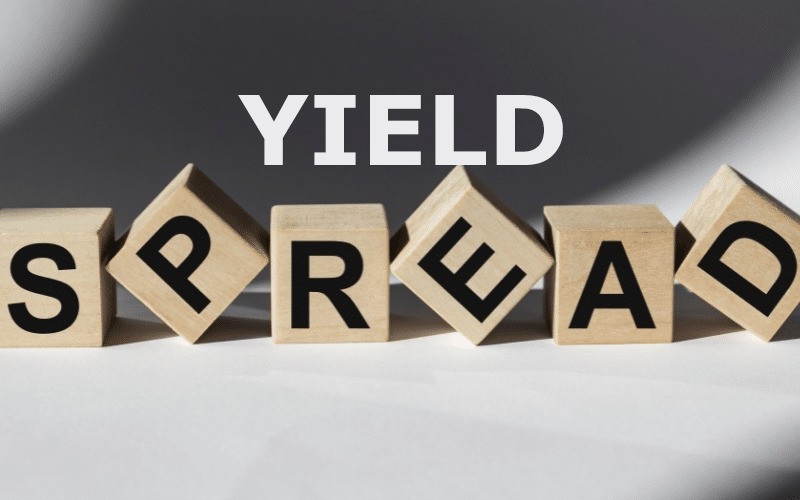Yield spread refers to the difference between one bond’s yield and another. Therefore, to calculate yield spread, we subtract the yield of a bond from the other. A spread tells us which bond is cheaper and which one is expensive.
Investors use yields to evaluate the potential returns from a particular bond, in addition to helping them in decision-making when choosing between different bonds.
Yields are presented as a percentage, while their spreads are presented as basis points. In this case, a basis point is 1/100 of a percentage. This means, for example, that a ten percent spread equals 1000 basis points.
How do yield spreads work?
As economic productivity changes periodically, so do yield spreads. There are times when the spread broadens, while at times it becomes slimmer. Due to these differences, the corresponding spreads also react to the changes. Typically, bond yields fall when bond prices rise and they rise when the prices fall.
According to this logic, when the spreads become wider, then one segment of the economy is growing at a faster rate than the other.
For example, let’s assume that the US 10-year T-bills yield was at 3% last month while the bond market index was 5%. If the Treasury bond yield rises to 4%, and the index yield remains the same, the Treasuries will have risen by 1% while the spread will have reduced from 200 to 100 basis points. In this case, bond investors will end up gaining more.
Prices and yields in bonds
Bond prices and their respective yields have a seesaw relationship with each other. At the point of issuance, bonds have fixed interest rates payable to the buyers. However, as time goes by, some investors opt to sell them at a profit in secondary markets. Here, their price action depends on the periodic changes to bank interest rates.
Rising interest rates trigger reduced bond yields in the markets and vice versa. This also causes a responsive change in the interest rates of newly-issued bonds.
For example, in case bank interest rates rise before issuance of new bonds, the Fed will raise their interest rates in order to attract buyers.
However, this makes previously issued bonds become less attractive, meaning that their holders will have to sell them at reduced prices. This situation continues for as long as interest rates are changed and causes periodic changes to yield spreads.
Implications on investors
Bond yields of high-risk companies and financially-strained governments tend to be significantly higher than those of low-risk investments. This is because it takes an extra incentive to convince investors to put their money into a risky venture.
Conversely, low-risk bonds have lower yields because investors have a high level of confidence in them. Investors also find these assets attractive because their risk of default is low. A good example are bonds issued by the US Treasury. They are more secure and attractive and thus have lesser yields than those issued by financially constrained corporations.
This principle is also applicable when weighing junk-status versus investment-grade bonds. It is also common for the yields of two different bonds issued by the same institution to have wide spreads.
For example, two-year US Treasury yields are significantly lower than the ten-year ones. Using the concept of spreads, investors can weigh between taking a lower-risk 2-year bond and a high-risk 10-year bond.
Equally important, the yield spread between these long-term and short-term bonds is used to assess the performance of the economy and the likelihood of a recession or a boom in the coming year.
Using the monetary policy of the day, investors can assess the suitability of investing in Treasuries in the long-term and short-term. They do this by projecting the possible impact of inflation on the value of their long-term Treasuries. They also integrate their preferred rate of inflation during their period of holding the Treasuries and see whether the Fed’s monetary policy is likely to keep inflation within a suitable limit.
If investors are convinced that inflation is likely to rise significantly (and hence reduce the value of their bonds), investors may opt to sell long-term bonds and find alternative investments. This may also lead to a reduction in the price of 10-year bonds in the secondary market, with the resultant effect being a rise in the demand for short-term bonds.
Bottom line
Bonds and the yields tell us a lot about the financial capabilities of the issuer. The higher the bond yield, the higher the risk of losing the principal. Therefore, do not be easily enticed by promises of high returns at the expense of losing the largest chunk of your money. Therefore, ensure that you strike a balance between your need to realize optimal profits and safeguarding your funds.



